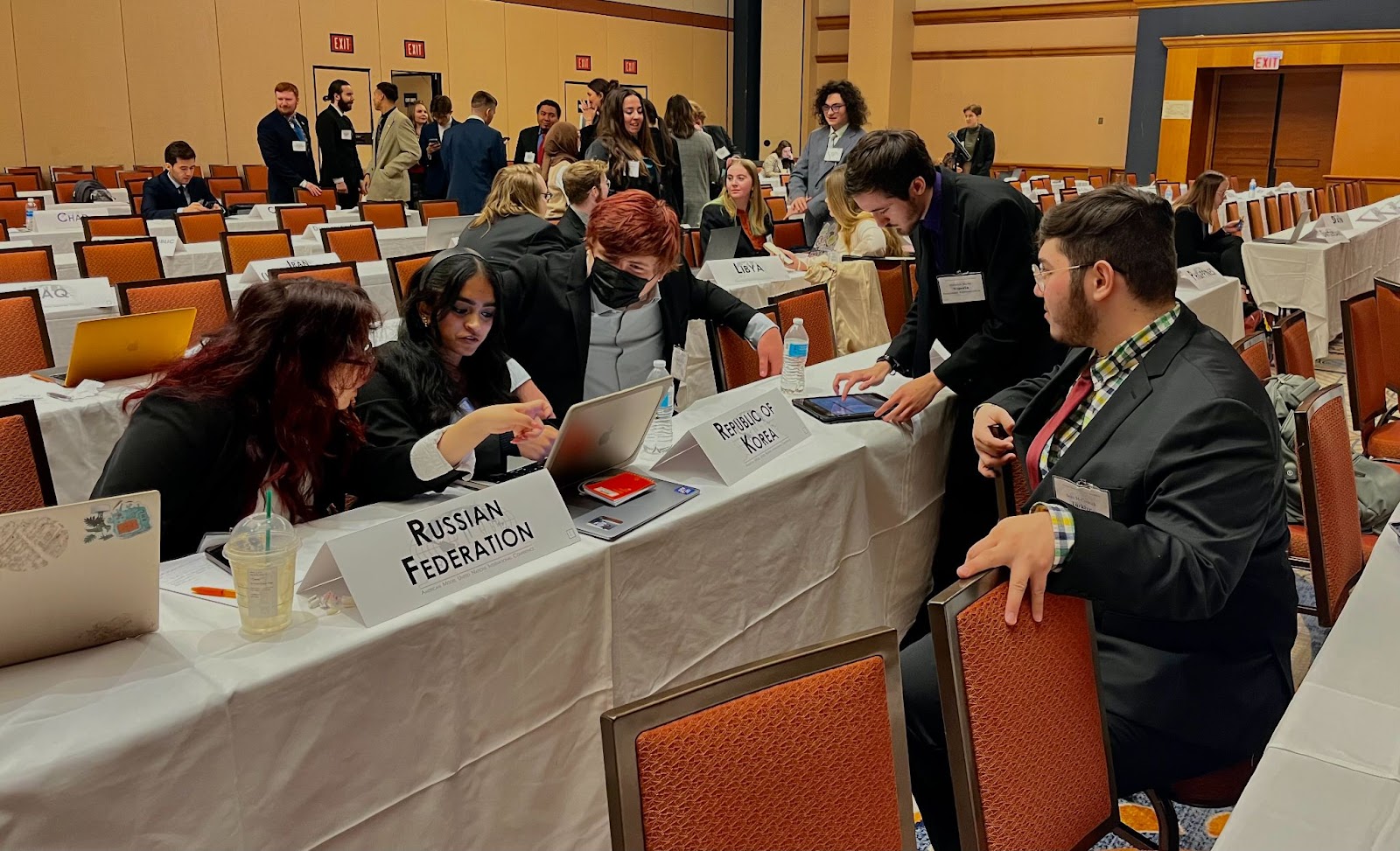
ITU: Bridging the Gap through Broadband Access

By: Walter Aleksic, Student Reporter*
The International Telecommunication Union (ITU) is currently reviewing a convergence of ideas from several countries, notably Germany and the Russian Federation, on the topic of digital inclusion for indigenous communities. Each of these resolutions, while distinct in their individual approach, shares a common vision that could lead to a singular, impactful resolution.
Representative Christian Edwards from Germany said, “Our main resolution is to establish a subcommittee of the International Telecommunication Union that focuses on upgrading the telecommunication infrastructure of indigenous groups, considering their needs, desires, and avoiding tokenization and globalization.” Representative Morrigan McCoy of Côte d’Ivoire agrees with Germany stating, “We’re collaborating on Germany’s resolution Edge, to form a convening body composed of members from all continents and significant representation of indigenous voices.”
While speaking on another resolution that doesn’t include a subcommittee, Representative Nemsie Gonzalez of Russia said, “Our focus includes education, digital literacy and expanding the digital economy. A key aspect of our approach is preventing neocolonialism through digital inclusion and collaboration with both private and public investors.”
Representative Joseph DeLuca of Cameroon said, “Our delegation, along with others from the Global South, has identified the urgent need for greater regional cooperation to address the challenges faced by indigenous populations in developing nations.”
All resolutions prioritize empowering indigenous communities in the digital world, acknowledging the necessity of digital literacy and education. They emphasize the expansion of broadband and technological infrastructure in areas inhabited by indigenous peoples, whose lands are often defined by their unique cultural, linguistic, and historical characteristics, distinct from dominant populations in the region. These resolutions uphold the preservation of indigenous cultures and languages in digital spaces, all while respecting community sovereignty and self-determination.
Currently, there are three resolutions brought to the floor with unique but minor differences between them. In a show of compassion, inclusion and respecting diversity, the members are looking to not merge the resolutions into one but pass them all so the body can have diversity of thoughts on this topic. This approach highlights the ITU’s commitment to embracing diverse perspectives and solutions in its mission to promote digital inclusion.
The views and opinions expressed in this article were part of simulation of the United Nations held from 18 to 21 November 2023 and do not reflect the views and opinions of the American Model United Nations Conference, American Model United Nations International, LLC., the *Pacific Northwest University, or the governing bodies of the states mentioned in the article.
Keep Up With The Accords
More to read
The AMUN Accords is a premier resource for fact-based Model United Nations simulations. We are always looking for new contributors. Want to write for the AMUN Accords? Check out out the submission guidelines and then get in touch!




